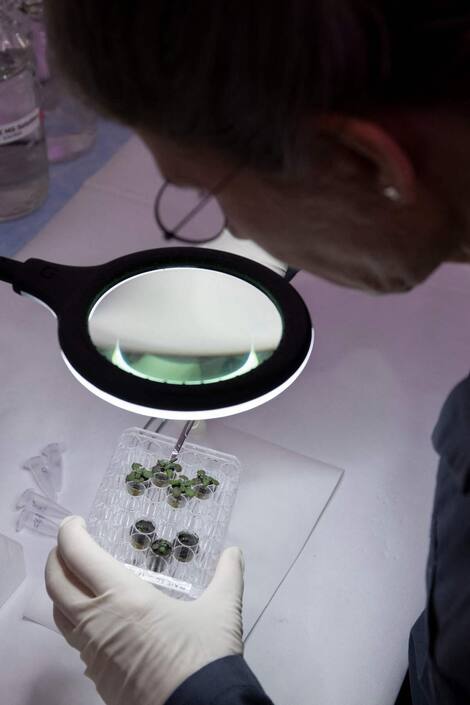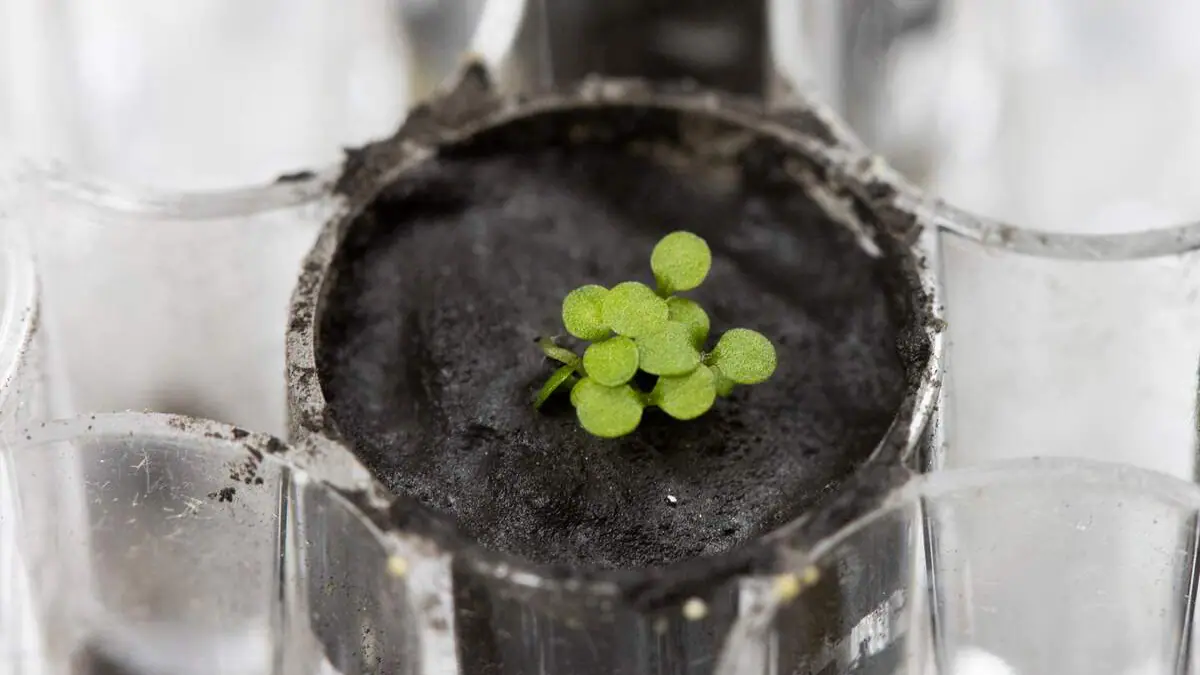A small pot of soil, but a big step towards space cultivation: Scientists, for the first time, grew plants in a few grams of lunar soil, as reported by astronauts on the Apollo program decades ago.
This success is due to the hope that one day the plants will be able to grow directly on the moon. This will save future explorers a lot of expensive loads on their rockets, even for long-distance missions.
There is a lot of work to be done, however, before it can be achieved.
“This research is critical to NASA’s long – term human exploration mission,” NASA Director Bill Nelson said in a statement. “Future astronauts living in deep space need to use resources from the moon and Mars to develop food resources.”

AFP
During the Apollo 11, 12 and 17 missions, the researchers used only 12 grams of lunar soil (a few teaspoons) collected from various parts of the Moon for their experiments.
In small bowls the size of a finger, they put one gram of soil (called regolith) each time, add water, and then the seeds. A nutrient solution was added daily.
The Arabidopsis taliana used was chosen because it grows easily and, above all, because it has already been extensively studied: its genetic code, as well as its hostile environment – even in space – is well known.
We planted the seeds simultaneously in the soil from our own land and helped to compare the soil mimic samples of the Moon and Mars.
Result: Two days later, the seeds of the lunar samples germinated.
In addition, “all the plants on the moon and in the controlled soil looked the same until the sixth day,” said Anna-Lisa Paul, lead author of the study, in a statement.
But later, lunar plants were found to be slow growing and stunted.
After 20 days, the scientists harvested them and studied their DNA. They found that lunar plants react similarly to adverse weather conditions, such as the presence of too much salt or heavy metals in the soil.
In the future, scientists want to understand how this environment can be more hospitable.
NASA is preparing to return to the moon as part of its Artemis program, with the goal of establishing a human presence there.

Prone to fits of apathy. Unable to type with boxing gloves on. Internet advocate. Avid travel enthusiast. Entrepreneur. Music expert.



